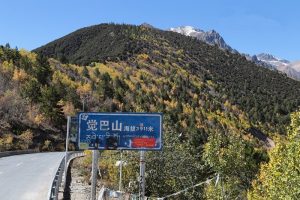
Xiaoenda Ruins in Karub District, Chamdo
Chinese Name: 小恩达遗址
English Name: Xiaoenda Ruins in Karub District, Chamdo
Location: Located in Karub District, Chamdo Prefecture, Tibet Autonomous Region
Admission Fee: Free
Opening Hours: All Day
Basic Information of Xiaoenda Ruins
Xiaoenda Ruins(小恩达遗址)is located at the east bank of the Angqu River(昂曲河), 5 km north of Chamdo County(昌都县), Karub District(卡若区), Chamdo Prefecture(昌都市), Tibet Autonomous Region. It is 800 meters from Xiaoenda Township(小恩达乡)and 3,263 meters above sea level, covering an area of about 100,000 square meters and belongs to the late neolithic site. The remains are divided into two parts according to the time sequence: the house site, the ash pit, the kiln cave and an ancient tomb. A large number of stone tools, pottery and animal bones were unearthed. In 1996, it was declared as the third batch of cultural relic’s protection units in the autonomous region by the people’s government of the autonomous region. In May 2013, it was approved by the state council as the seventh national key cultural relic protection unit.
Xiaoenda Ruins is the second neolithic site in the area of the eastern Tibet. In 1986, the census team of the Tibet autonomous region investigated and tried the site for the first time. The test area is 60 square meters. The remains were divided into two periods in the morning and evening, according to the characteristics of the excavated objects and the determination of carbon 14 and the tree wheel calibration, dating from about 3,000 to 4000 years ago. The discovery of three housing ruins, 1 of the ash pit and 5 of the cave, unearthed a large number of stone tools, stone tools, stone tools, and ceramic tablets. Early homes represented by grass mix mud building, and 10 meters in 2 Ⅹ exploratory trench in clearing a nearly 4000 ancient tombs.
The Significant Value of Xiaoenda Ruins
The discovery of the site help to trace the origins of the Tibetan, the Tibetan region, early cultural ties, and the Yellow River basin as well as establishing and perfecting Karub culture provides a very precious material type, and sequence. The archaeological culture represented by Xioaenda sarcophagus was first discovered in Tibet. The found of Xiaoenda Ruins Site provide essential clue for the study of Xiaoenda sarcophagus burial which was represented by the ancient culture and the relationship between cultural the northwest, as well as west, northwest Yunnan and Sichuan, Qinghai and Tibet.
There are chipped stone tools, microlith, grinding stone mixture integrating harmoniously together in Xiaoenda Ruins Site. It reflects the cultural connotation, and it not only belongs to the category of Karub culture, but also has obvious progress than Karub culture. According to the stone implement, the animal bones and other things in Xiaoenda Ruins, we can see that people has entered the stage of settlement life, which is mainly agricultural. From the point of cultural landscape, Xiaoenda Ruins are linked with the primitive culture of Tibet Nyingchi, Medog, and other sites in Lhasa.
Attraction Transportation
By Air
Chamdo Bangdad Airport, situated in Chengdu and at an altitude of 4300 m above sea level is the highest airport in the world. It has now started takes traffic from Lhasa airport. Qamdo town is around 128 km away from here that you can travel by road.
By Road
Road transportation is more preferred than air travel. Buses to all the major cities of Tibet originate from here. There is also a connection to cities of China and Nepal.
Local Transport
Taxis are the major mode of transport in the city. You can also avail the services of pedicab that you might more suitable to explore the city.
Attraction Travel Tips
- Traveling Hours: one day
- Traveling Seasons: summer.
- High Altitude Sickness Avoiding: Better take some medicines for relief and keep warm all the time.
- As there is a large temperature gap between daytime and night, it is highly recommended to take along some pieces of thermal clothing, hat, and gloves and so on.
- Please try your best to respect the religious belief and local customs.

















